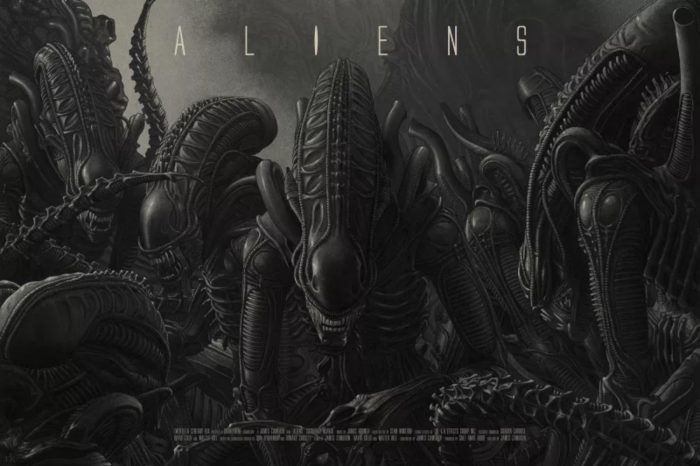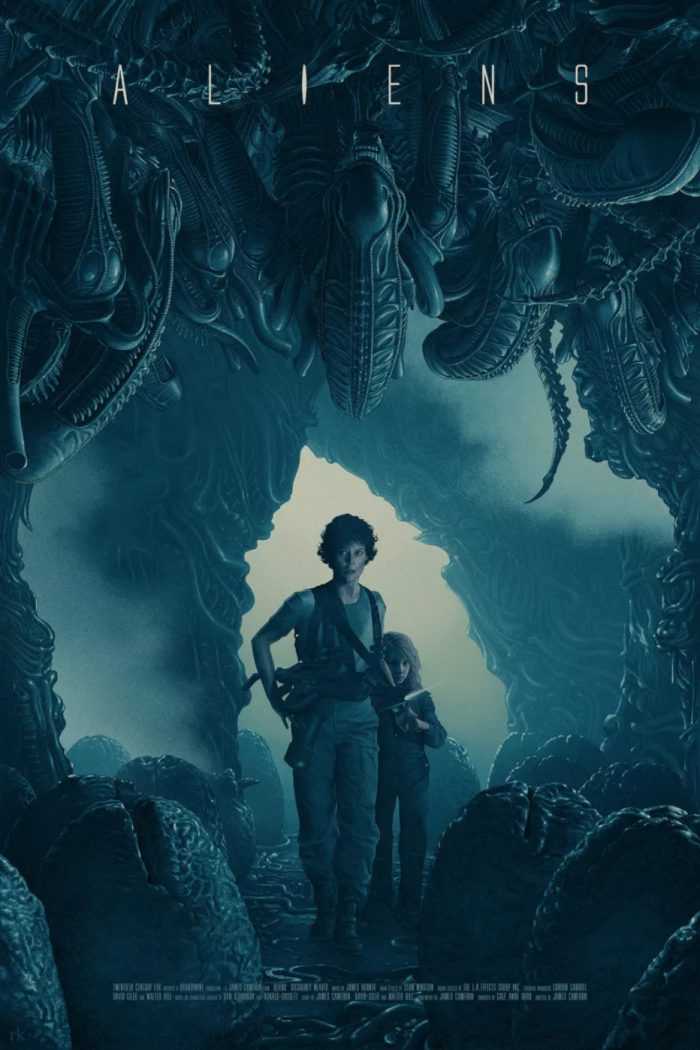These 'Aliens' Posters Are Out Of This World
The debate about whether Ridley Scott's Alien or James Cameron's Aliens is the better movie will likely rage on until humanity is eventually wiped out by a real life species of acid-bleeding killer aliens. But until then, we can also argue about the best poster that pays tribute to the ongoing sci-fi film franchise, and a couple of new contenders have come along from artist Rory Kurtz that make a strong case for Aliens. Check out both of these new Aliens posters below.
io9 points us to these pieces from Rory Kurtz, who recently created the one-sheet for Edgar Wright's Baby Driver and who has crafted some memorable work for companies like Mondo over the years. The outlet says these posters were private commissions, so unfortunately they won't be available for purchase anywhere unless you get lucky enough to stumble across them on eBay one day. Here's the first one, which showcases H.R. Giger's iconic creature design in all of its terrifying glory:

And here's the variant, which adds a blue tint and some lifelike depictions of Sigourney Weaver's Ripley and Carrie Henn's Newt walking down the wrong hallway:

That first poster is cool – it's eerie and dark and menacing, and the coloring gives it almost a metallic or mechanical feel, subconsciously projecting the idea that the Xenomorphs are programmed specifically to kill.
But the second one is the standout image for me, flipping the first image on its head and adding to it. It's a meta commentary on what James Cameron did with the sequel: it took the groundwork that Ridley Scott laid, switched things up, and gave us something unexpected that put Ripley even more at the center of the action as danger lurks around her on all sides.
Plus, it's hard to ignore the rest of the background imagery here: Giger's original design for the Xenomorphy was obviously phallic, and Kurtz's take here reverses that symbolism by having the two female protagonists walk down a vaginal-inspired canal, complete with eggs at their feet. There's a tension to the piece, an uncomfortable menace that, from what I understand from the women in my life, speaks to the larger female experience in 2018 as well as to what these specific characters went through in 1986 (or technically in the future of 2179, but you know what I mean).
You can check out more of Rory Kurtz's work right here.
